The Hard Goodbye Pt. 5 - PS Audio PowerBase

DarqueKnight
Posts: 6,765
Introduction
This report discusses the evaluation of isolation devices, PS Audio PowerBases, in my two channel audio system. My first evaluations of isolation devices done in 2009 are discussed here.
The PerfectWave PowerBase consists of a 20 pound steel platform floating on Sorbothane supports which diffuse vibrational energy between 3 Hz and 30 Hz. A one-way power line noise gate is also included which filters incoming power and blocks noise from the connected component from entering the power line. The PowerBase addresses microphonics noise that is induced through the air from loudspeaker vibrations and it addresses electrical noise from the power line and from the audio component. The PowerBase offers 40 dB rejection of common and differential mode noise. Two pieces of equipment, up to a combined weight of 100 pounds, can be supported. MSRP: $995, with 30-day fully refundable in-house trial with return shipping paid by PS Audio.
First Day Evaluations
I obtained good results with the PowerBase straight out of the box on day one. With both my turntable and SACD player, I heard more musical details, more image weight, more bass growl and articulation, more overall clarity, enhanced spatiality (more sound stage width and depth and enhanced sense of space between images) and more tactile sensation. On some recordings, there was an enhanced "thunderous" quality to bass notes.
Prior to the PowerBase, both my turntable and SACD player were placed on Black Diamond Racing carbon fiber vibration abatement products. The SACD player rested on three BDR Jumbo Pits which had a Mark 4 Cone (pointing downward) resting on top. A Pit/Cone combination was placed at the rear left under the power supply, at the middle front under the disc transport and at the rear right. The turntable's standard feet were three BDR Mark 4 cones, to which I added a BDR Jumbo Pit.
Placing the SACD player on its own feet on the PowerBase resulted in diminished sound quality. The combination of Black Diamond Racing cones
and pits on top of the PowerBase resulted in improved sound over using the cones and pits alone.
I found the PowerBase to be very sensitive to power cords. As I went up in power cord quality, on both the incoming and outgoing sides, better
sound quality resulted. For the SACD player, I have a Premier SC power cord between the P10 AC regenerator and another Premier SC between the
PowerBase and the SACD player. The power chain is as follows:
1. Dedicated 20 amp AC circuit.
2. PS Audio Soloist Premier SE in-wall conditioner.
3. PS Audio AC-12 power cord.
4. PS Audio P10 AC regenerator.
5. PS Audio Premier SC power cords from P10 to source components and preamplifiers.
Each Parasound JC 1 monoblock power amp is on a dedicated 20 amp AC circuit terminated by a PS Audio Soloist SC and AC-12 power cord. The P10 and all other electronics have HiFi Tuning Supreme power line fuses.
The Teres Audio Model 255 turntable rested on three Black Diamond Racing Jumbo Pit/Mark 4 Cone combinations. I thought (hoped) I might be able to get away with using the PowerBase only as an isolation platform. Running the turntable motor power supply from the PowerBase resulted further improvements (image weight, increased space between images, more articulate bass) over just running the power supply from the P10. A Premier SC power cord ran from the P10 to the PowerBase and a Statement SC power cord ran from the PowerBase to the turntable motor power supply.

Figure 1. Two channel audio system. The equipment cabinet is a Salamander Triple 30. The floor is
hardwood glued to concrete slab.
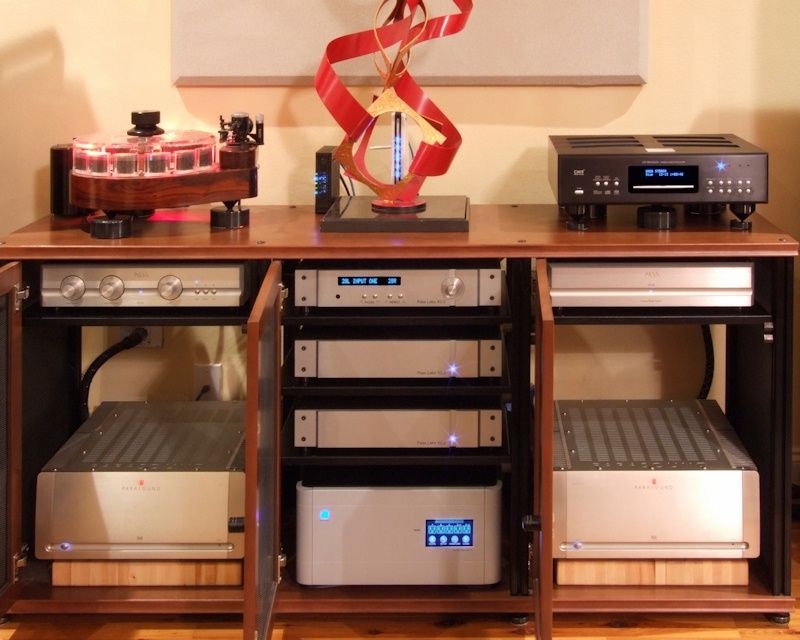
Figure 2. Two channel audio system electronics.
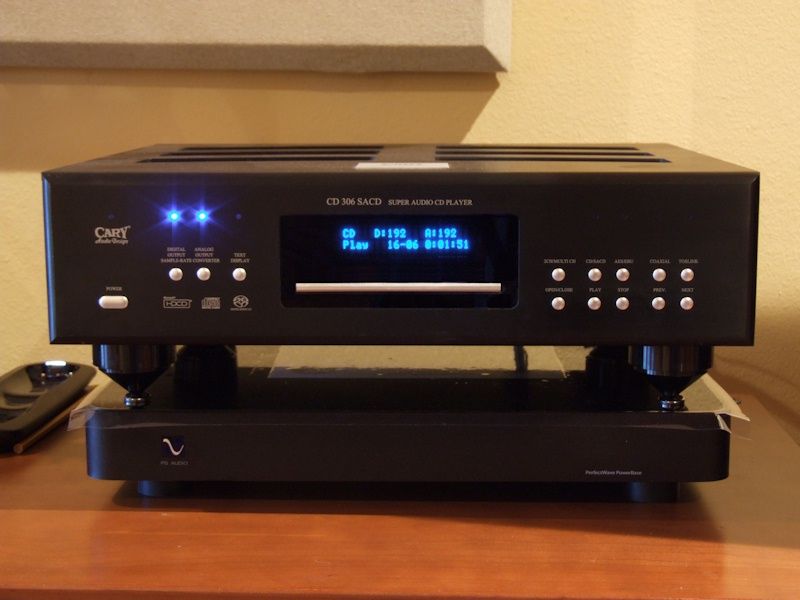
Figure 3. Cary Audio CD 306 Pro Version CD/SACD player on PowerBase. This did not work.
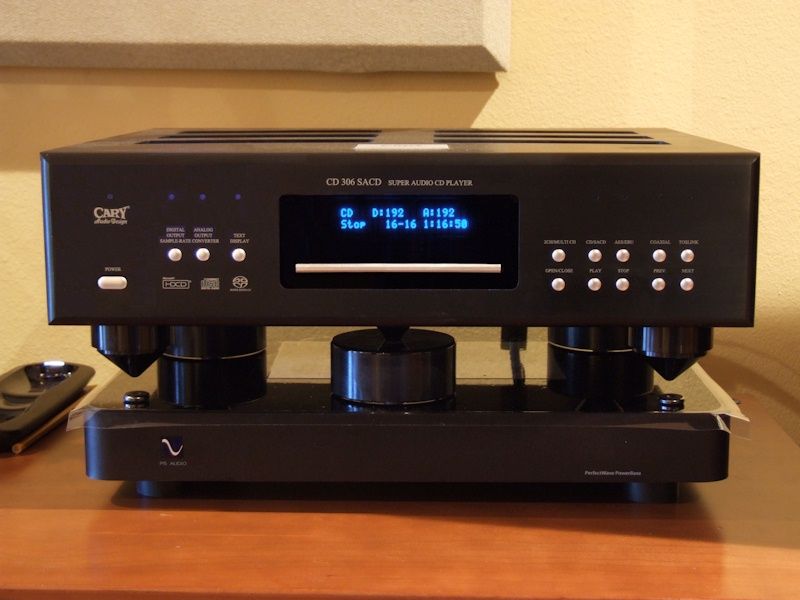
Figure 4. Cary Audio CD 306 Pro Version CD/SACD player on PowerBase and Black Diamond Racing cones
and pits. This combination was outstanding.

Figure 5. Teres Audio Model 255 turntable on PowerBase. I needed to raise the motor 1 inch. A 5" x 5" x
1.25" marble sample worked perfectly. The rough side provided excellent grip for the motor's feet. I later
found that using the BDR pitss between the turntable and PowerBase provided additional improvement.
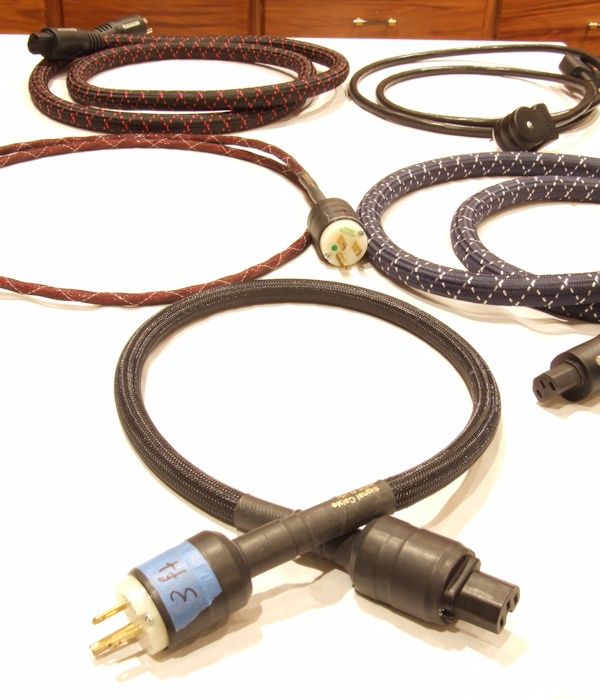
Figure 6. A variety of power cords were used. Clockwise from bottom: Signal Cable MagicPower
($59, 3 ft., 10 AWG), Signal Cable Digital Reference ($124, 6 ft., 12 AWG), PS Audio Statement SC
($659, 2m, 8 AWG), Volex 14 ($50, 6 ft., 14 AWG), PS Audio Premier SC ($1793, 2m, 7 AWG).
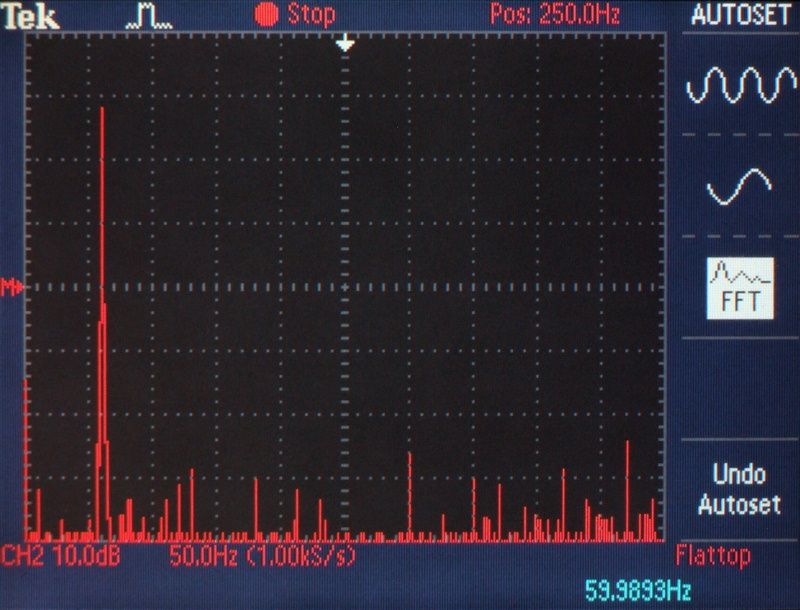
Figure 7. Oscilloscope Fast Fourier Transform plot of the power signal noise spectrum out of the Premier SC
power cord connected to the P10.
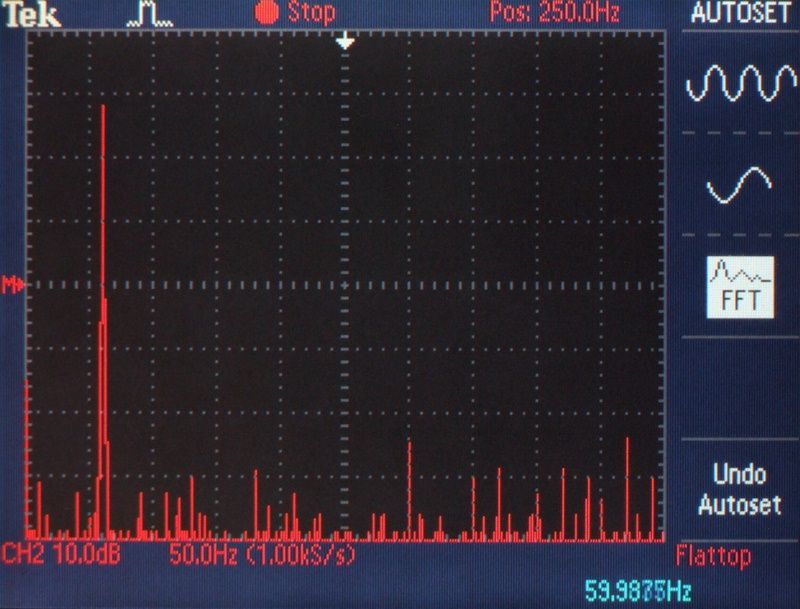
Figure 8. Oscilloscope Fast Fourier Transform plot of the power signal noise spectrum out of the PowerBase
connected to the P10. The noise is lower in density and amplitude around 60 Hz (large spike).

Figure 9. The included 8.5" 14 AWG power cord was way too short...on both length and sound.
Associated Equipment
Pass Labs X0.2 Line Level Preamplifiers
Pass Labs XP-25 Phono Preamplifiers
Parasound Halo JC 1 Monoblock Power Amplifiers
Teres Audio Model 255 Turntable with Reference II Motor
Graham Phantom B-44 Tonearm
Ortofon MC Windfeld Phono Cartridge
Cary Audio CD 306 Professional Version CD/SACD Player
PS Audio P10 AC Regenerator
Polk Audio SDA SRS 1.2TL Loudspeakers (Hotrodded)
PS Audio AC-12 Power Cords for P10 and Power Amplifiers
PS Audio Premier SC Power Cords for Source Components and Preamplifiers
AudioQuest Sky XLR Interconnects
AudioQuest Everest Speaker Cables
PowerBase Break In
The PowerBase manual does not recommend a specific number of hours of break in. It only says wait a week before doing critical listening. Since 2009, I have used an Audiodharma Cable Cooker to accelerate audio component break in. The rule of thumb is 1 hour on the Cooker is roughly equal to 3 hours of actual use. The recommended break in time for the Soloist Premier SE was 200 to 500 hours, depending on who at PS Audio answered your phone call or email. PS Audio has been consistent in their recommendation of 300 hours of break in for power cables.
For power and speaker cables, the Cable Cooker uses a 12 volt, 1.88 amp (22 watts rms) conditioning signal that consists of a sweeping square wave (0 to 40 kHz). For interconnects, the Cooker uses a 12 volt 120 mA (1.44 watts rms).

Figure 10. I made a Y-adapter so that I could pull current through both outlets of a duplex receptacle.
However, break in takes twice as long because the current is split between receptacles.

Figure 11. Since only one component will be used with this PowerBase, there was no need to break in both
outlets because only one component will be plugged in to each of my PowerBases.
The PowerBases provided Such Good Sound for my turntable and SACD player that I wanted to try a PowerBase under my P10 AC regenerator. However, as can be seen in figure 2, I did not have room to accommodate the 2.75" height of the PowerBase and still provide adequate air circulation space above the P10 and the other components above it. The P10 did benefit from three aluminum cones, as noted here.
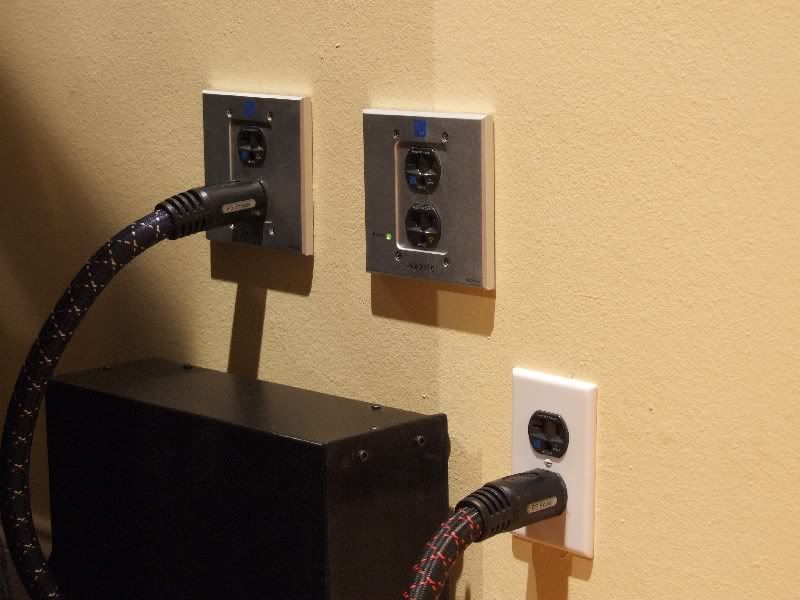
Figure 12. Two of three Soloist Premier SE in-wall conditioners behind the two channel equipment cabinet
and a Power Port Premier below them.
One might think that, since duplex receptacles have both outlets wired in parallel, there is no need to break in both outlets. You need to pull current through each outlet. The plastic body surrounding the blade receptacles in each outlet has dielectric properties and it requires conditioning to reduce the effects of absorption and spurious release of energy from and to the power signal. Figure 12 shows two Soloist Premier SE in-wall conditioners, each with a Power Port Premier receptacle. Another Power Port Premier receptacle replaced the ordinary receptacle at the lower right. In each of the three receptacles in figure 12, the lower outlet is broken in and the upper outlet is not. The difference between the broken in and unbroken in outlet of each receptacle is easily heard, as is the difference between the Soloist SE and the "naked" Power Port Premier installed in the wall.
This report discusses the evaluation of isolation devices, PS Audio PowerBases, in my two channel audio system. My first evaluations of isolation devices done in 2009 are discussed here.
The PerfectWave PowerBase consists of a 20 pound steel platform floating on Sorbothane supports which diffuse vibrational energy between 3 Hz and 30 Hz. A one-way power line noise gate is also included which filters incoming power and blocks noise from the connected component from entering the power line. The PowerBase addresses microphonics noise that is induced through the air from loudspeaker vibrations and it addresses electrical noise from the power line and from the audio component. The PowerBase offers 40 dB rejection of common and differential mode noise. Two pieces of equipment, up to a combined weight of 100 pounds, can be supported. MSRP: $995, with 30-day fully refundable in-house trial with return shipping paid by PS Audio.
First Day Evaluations
I obtained good results with the PowerBase straight out of the box on day one. With both my turntable and SACD player, I heard more musical details, more image weight, more bass growl and articulation, more overall clarity, enhanced spatiality (more sound stage width and depth and enhanced sense of space between images) and more tactile sensation. On some recordings, there was an enhanced "thunderous" quality to bass notes.
Prior to the PowerBase, both my turntable and SACD player were placed on Black Diamond Racing carbon fiber vibration abatement products. The SACD player rested on three BDR Jumbo Pits which had a Mark 4 Cone (pointing downward) resting on top. A Pit/Cone combination was placed at the rear left under the power supply, at the middle front under the disc transport and at the rear right. The turntable's standard feet were three BDR Mark 4 cones, to which I added a BDR Jumbo Pit.
Placing the SACD player on its own feet on the PowerBase resulted in diminished sound quality. The combination of Black Diamond Racing cones
and pits on top of the PowerBase resulted in improved sound over using the cones and pits alone.
I found the PowerBase to be very sensitive to power cords. As I went up in power cord quality, on both the incoming and outgoing sides, better
sound quality resulted. For the SACD player, I have a Premier SC power cord between the P10 AC regenerator and another Premier SC between the
PowerBase and the SACD player. The power chain is as follows:
1. Dedicated 20 amp AC circuit.
2. PS Audio Soloist Premier SE in-wall conditioner.
3. PS Audio AC-12 power cord.
4. PS Audio P10 AC regenerator.
5. PS Audio Premier SC power cords from P10 to source components and preamplifiers.
Each Parasound JC 1 monoblock power amp is on a dedicated 20 amp AC circuit terminated by a PS Audio Soloist SC and AC-12 power cord. The P10 and all other electronics have HiFi Tuning Supreme power line fuses.
The Teres Audio Model 255 turntable rested on three Black Diamond Racing Jumbo Pit/Mark 4 Cone combinations. I thought (hoped) I might be able to get away with using the PowerBase only as an isolation platform. Running the turntable motor power supply from the PowerBase resulted further improvements (image weight, increased space between images, more articulate bass) over just running the power supply from the P10. A Premier SC power cord ran from the P10 to the PowerBase and a Statement SC power cord ran from the PowerBase to the turntable motor power supply.

Figure 1. Two channel audio system. The equipment cabinet is a Salamander Triple 30. The floor is
hardwood glued to concrete slab.

Figure 2. Two channel audio system electronics.

Figure 3. Cary Audio CD 306 Pro Version CD/SACD player on PowerBase. This did not work.

Figure 4. Cary Audio CD 306 Pro Version CD/SACD player on PowerBase and Black Diamond Racing cones
and pits. This combination was outstanding.

Figure 5. Teres Audio Model 255 turntable on PowerBase. I needed to raise the motor 1 inch. A 5" x 5" x
1.25" marble sample worked perfectly. The rough side provided excellent grip for the motor's feet. I later
found that using the BDR pitss between the turntable and PowerBase provided additional improvement.

Figure 6. A variety of power cords were used. Clockwise from bottom: Signal Cable MagicPower
($59, 3 ft., 10 AWG), Signal Cable Digital Reference ($124, 6 ft., 12 AWG), PS Audio Statement SC
($659, 2m, 8 AWG), Volex 14 ($50, 6 ft., 14 AWG), PS Audio Premier SC ($1793, 2m, 7 AWG).

Figure 7. Oscilloscope Fast Fourier Transform plot of the power signal noise spectrum out of the Premier SC
power cord connected to the P10.

Figure 8. Oscilloscope Fast Fourier Transform plot of the power signal noise spectrum out of the PowerBase
connected to the P10. The noise is lower in density and amplitude around 60 Hz (large spike).

Figure 9. The included 8.5" 14 AWG power cord was way too short...on both length and sound.
Associated Equipment
Pass Labs X0.2 Line Level Preamplifiers
Pass Labs XP-25 Phono Preamplifiers
Parasound Halo JC 1 Monoblock Power Amplifiers
Teres Audio Model 255 Turntable with Reference II Motor
Graham Phantom B-44 Tonearm
Ortofon MC Windfeld Phono Cartridge
Cary Audio CD 306 Professional Version CD/SACD Player
PS Audio P10 AC Regenerator
Polk Audio SDA SRS 1.2TL Loudspeakers (Hotrodded)
PS Audio AC-12 Power Cords for P10 and Power Amplifiers
PS Audio Premier SC Power Cords for Source Components and Preamplifiers
AudioQuest Sky XLR Interconnects
AudioQuest Everest Speaker Cables
PowerBase Break In
The PowerBase manual does not recommend a specific number of hours of break in. It only says wait a week before doing critical listening. Since 2009, I have used an Audiodharma Cable Cooker to accelerate audio component break in. The rule of thumb is 1 hour on the Cooker is roughly equal to 3 hours of actual use. The recommended break in time for the Soloist Premier SE was 200 to 500 hours, depending on who at PS Audio answered your phone call or email. PS Audio has been consistent in their recommendation of 300 hours of break in for power cables.
For power and speaker cables, the Cable Cooker uses a 12 volt, 1.88 amp (22 watts rms) conditioning signal that consists of a sweeping square wave (0 to 40 kHz). For interconnects, the Cooker uses a 12 volt 120 mA (1.44 watts rms).

Figure 10. I made a Y-adapter so that I could pull current through both outlets of a duplex receptacle.
However, break in takes twice as long because the current is split between receptacles.

Figure 11. Since only one component will be used with this PowerBase, there was no need to break in both
outlets because only one component will be plugged in to each of my PowerBases.
The PowerBases provided Such Good Sound for my turntable and SACD player that I wanted to try a PowerBase under my P10 AC regenerator. However, as can be seen in figure 2, I did not have room to accommodate the 2.75" height of the PowerBase and still provide adequate air circulation space above the P10 and the other components above it. The P10 did benefit from three aluminum cones, as noted here.

Figure 12. Two of three Soloist Premier SE in-wall conditioners behind the two channel equipment cabinet
and a Power Port Premier below them.
One might think that, since duplex receptacles have both outlets wired in parallel, there is no need to break in both outlets. You need to pull current through each outlet. The plastic body surrounding the blade receptacles in each outlet has dielectric properties and it requires conditioning to reduce the effects of absorption and spurious release of energy from and to the power signal. Figure 12 shows two Soloist Premier SE in-wall conditioners, each with a Power Port Premier receptacle. Another Power Port Premier receptacle replaced the ordinary receptacle at the lower right. In each of the three receptacles in figure 12, the lower outlet is broken in and the upper outlet is not. The difference between the broken in and unbroken in outlet of each receptacle is easily heard, as is the difference between the Soloist SE and the "naked" Power Port Premier installed in the wall.
Proud and loyal citizen of the Digital Domain and Solid State Country!
Post edited by DarqueKnight on
Comments
-
Turntable PowerBase After Break In
I had planned to break in the PowerBase and it's Premier SC power cord for seven straight days on the Audiodharma Cable Cooker, but I stopped seeing improvements in the noise spectrum (FFT) measurements after the third day (72 hours straight). I also noticed that the Cable Cooker's signal amplitude from the PowerBase had risen from 11.8 to 12 volts. The Cooker's nominal output is 12 volts, but my unit puts out 13 volts. I reinstalled the PowerBase after the 114th hour (4.75 days) and there was the slightly veiled sound that was evidence of overcooking. A lot of the veiling went away after 2 hours of music play. The veiling was completely gone after letting the PowerBase and Premier SC power cord "rest" for 20 hours. It appears that 3 days (72 hours) of Cable Cooker processing was enough. This was approximately equivalent to 216 hours of break in with music play.
Comparing my pre and post break in listening notes, there were new instrumental details, heavier image weight, particularly with vocals, and more bass detail and articulation. I did not note any improvements in spatial rendering. I primarily listen to instrumental jazz.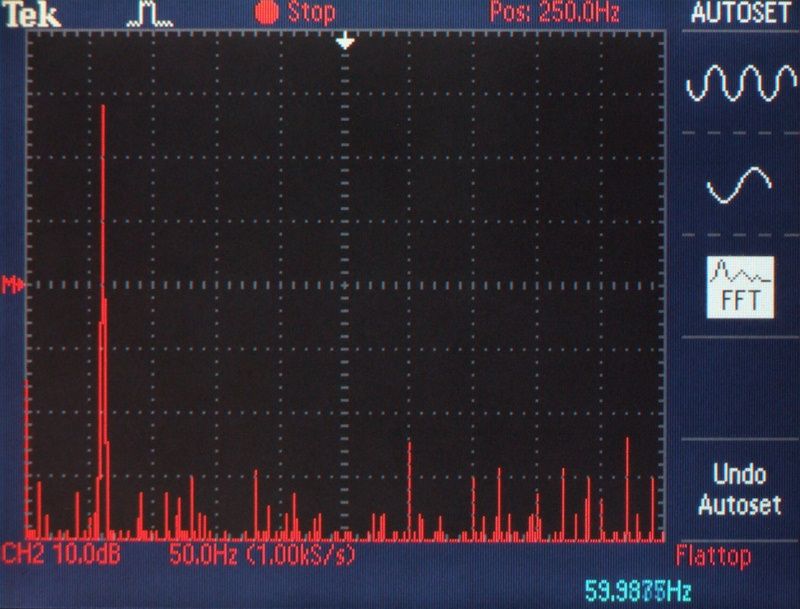
Figure 13. Fast Fourier Transform plot of PowerBase power signal pre-break in.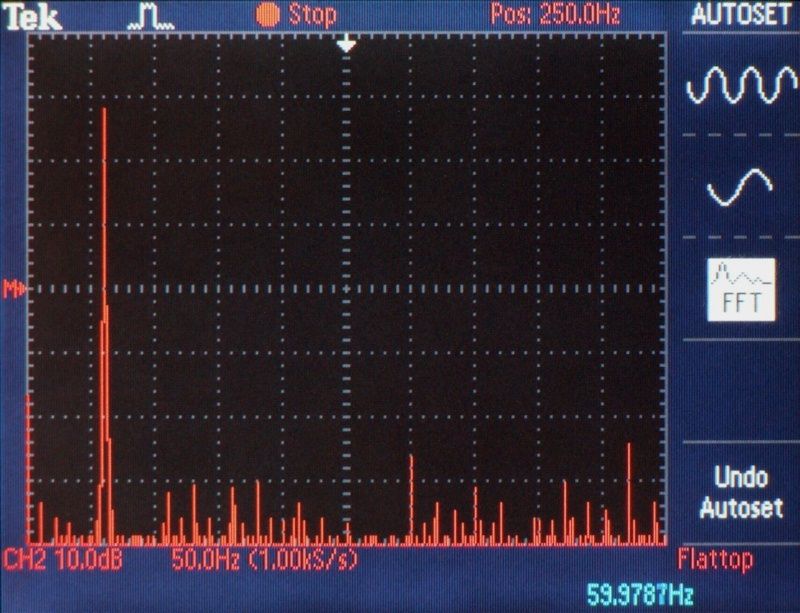
Figure 14. Fast Fourier Transform plot of PowerBase power signal post-break in.
It is easier to see the differences in the FFT plots in figures 13 and 14 by saving them and viewing in succession. These plots were taken with the PowerBase connected to a P10 AC regenerator by a Premier SC power cord. The P10 measured incoming THD of 1.5% and outgoing THD of 0.2% on the pre and post break in measurement days. The post-break in FFT shows a flatter and less dense noise spectrum overall, particularly around 60 Hz.
Figure 15. Locating the motor pod off the PowerBase presented some problems.
I use a twist-on reflex record clamp. Often, when I would twist off the clamp, the PowerBase top would tilt just enough to cause the belt to loose tension and slip down a bit on either the motor pulley or the platter or both. The issue was resolved by placing the motor pod on the PowerBase and behind the tonearm. This required reinstalling the Black Diamond Racing pucks. This turned out to be serendipitous because the BDR/PowerBase combination sounded better than the PowerBase alone.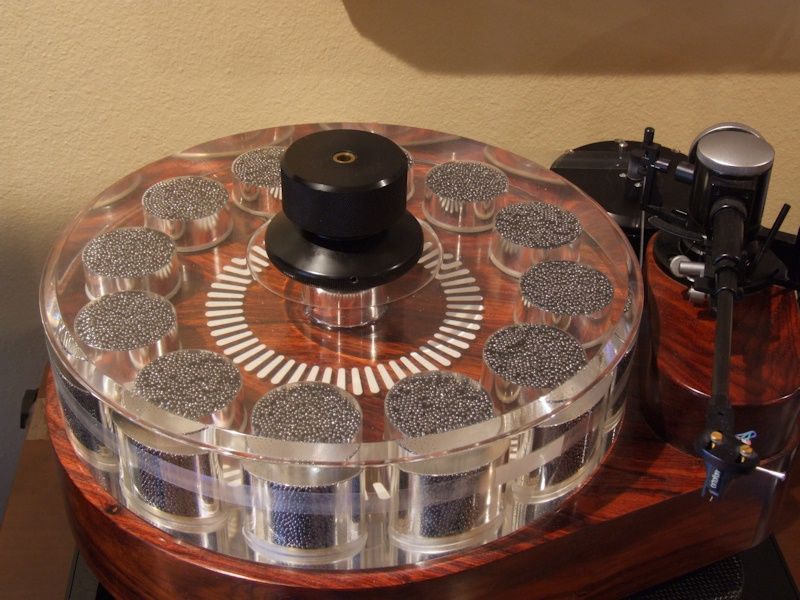
Figure 16. Placing the motor pod on the PowerBase and behind the tonearm resolved belt tension issues.
Figure 17. Strain relief for the PowerBase's heavy Premier SC power cords is provided by stiff foam blocks.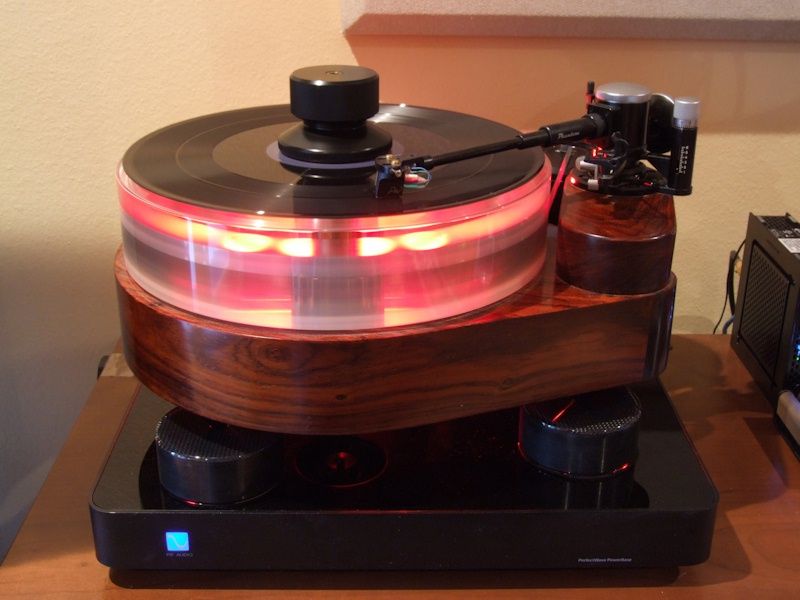
Figure 18. You look and sound beautiful, but I wish I knew how to quit you. Turntables are so aggravating
and inconvenient. The Teres Audio Model 255 turntable weighs 60 pounds. The Reference II motor weighs
6.5 pounds.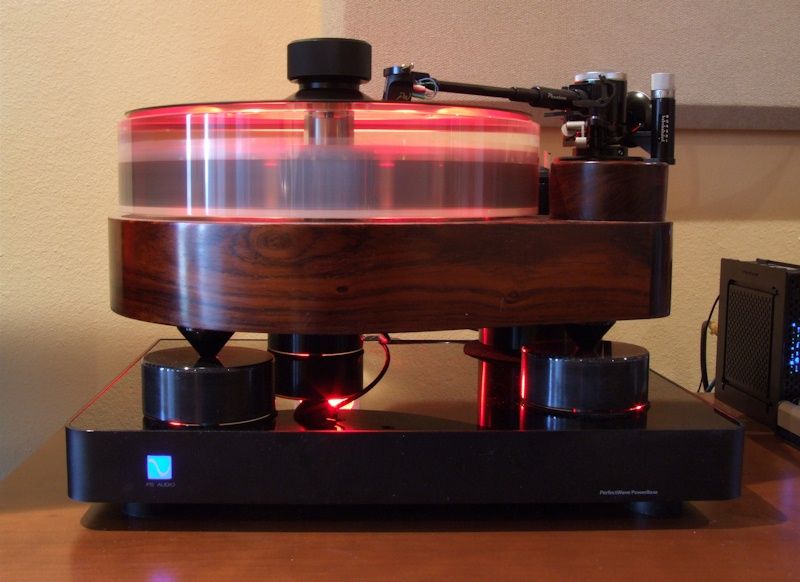
Figure 19. I had initially planned to keep the protective vinyl film on the PowerBase's top and just trim off
the excess around the edges. I changed my mind after taking a look at the glossy black surface.
Thin felt pads, cut from sheet fabric, cover the entire bottom of the BDR pucks, as well as the bottom of the motor pod. This prevents marring of the PowerBase's gloss black surface. I tried thin vinyl bumper pads under the pucks, but that resulted in a loss of image definition and blurred bass. The felt did not change the sound.
SACD Player PowerBase Break In
Figure 20. The second PowerBase and 1m Premier SC power cord for the SACD player.
I thought the PowerBase was going to allow me to move away from needing those big, thick, heavy gauge power cords. Guess what? No. I also thought I was going to ditch my BDR isolation gear, but again...no.
The PowerBase proved to be an excellent compliment to the mechanical noise and electrical noise abatement measures I already had in place.
Figure 21. Getting some preliminary listening in with the SACD player's PowerBase before it undergoes
break in conditioning with the Cable Cooker.
Power Signal Noise Spectrum Measurements
The power signal output was measured with a Tektronix TDS 2012 oscilloscope using the Fast Fourier Transform function. The first eight plots are with power supplied from the wall. The last two plots are with power supplied from a PS Audio P10 AC regenerator.
In the power from wall plots, the DC component (0 Hz), major harmonics (3rd, 5th, and 7th) and power company signalling tones are very prominent. The PowerBase was evaluated with a variety of power cords as shown in figures 22 and 23.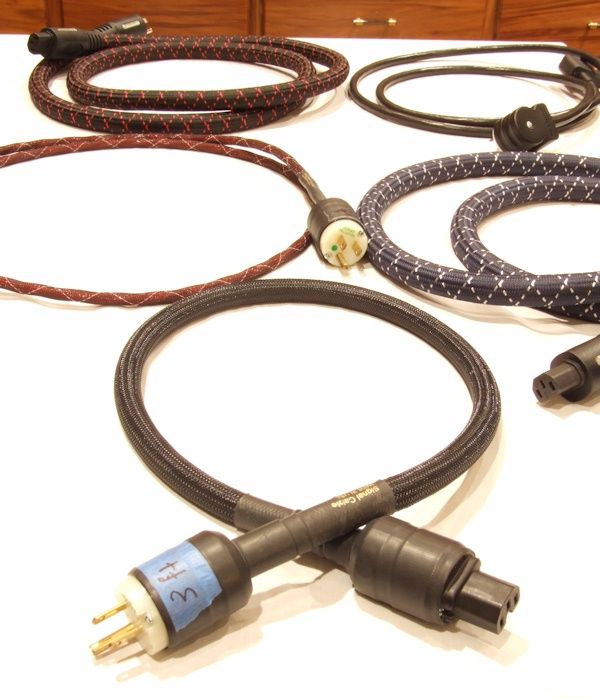
Figure 22. Clockwise from bottom: Signal Cable MagicPower ($59, 3 ft., 10 AWG), Signal Cable Digital Reference ($124, 6 ft., 12 AWG), PS Audio Statement SC ($659, 2m, 8 AWG), Volex 14 ($50, 6 ft., 14 AWG), PS Audio Premier SC ($1793, 2m, 7 AWG).
Figure 23. The PowerBase's stock 8.5" 14 AWG power cord.
In figures 24-33, the largest spike is the 60 Hz power signal. Everything else, for audio and video purposes, is undesirable noise. Each vertical dot represents 2 dB of amplitude. Each horizontal dot represents 10 Hz of frequency.
The voltage level of the fundamental 60 Hz power signal, its harmonics and other power spectrum components is calculated this way: The vertical axis does not start at 0 dB. It starts at a reference magnitude of -27 db (0.044 volts) The fundamental 60 Hz spike has a magnitude of 68.7 dB, therefore -27 dB + 68.7 dB = 41.7 dB, which is the absolute (real) magnitude of the fundamental 60 Hz frequency. A reference voltage of 1 volt rms (Vo) is assumed. The rms voltage (voltage coming out of the wall) is calculated by the equation Vrms=Vo x 10^(dB/20). For the 60 Hz power signal in figure 24,
Vrms = 1 x 10^(41.7/20) = 121.6 volts.
In addition to the contaminating effects of the power signal's DC component and odd order harmonics, which are a result of the way electric power is generated, there are also power company test and control tones at 10 Hz, 350 Hz and 470 Hz. These tones are used by the power company to remotely interact with power meters and other equipment on the power grid. Finally, there is background noise due to the wire and equipment on the power grid, and in the oscilloscope itself.
The following measurements were taken prior to breaking in the PowerBase. None of the power cords were broken in. The power line THD was 1.5%. All measurements were taken within a few minutes of each other.
It is easier to see differences in the FFT plots if they are saved and viewed in succession.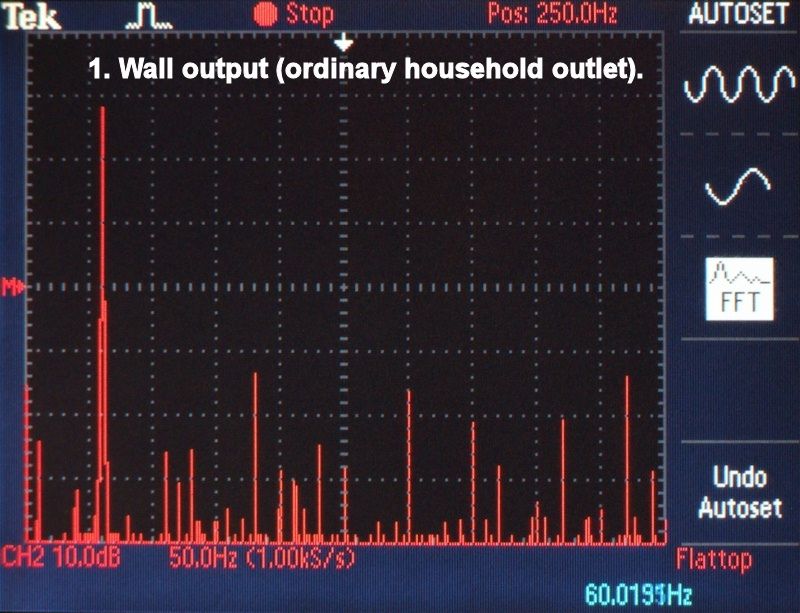
Figure 24. FFT of power signal from ordinary household outlet.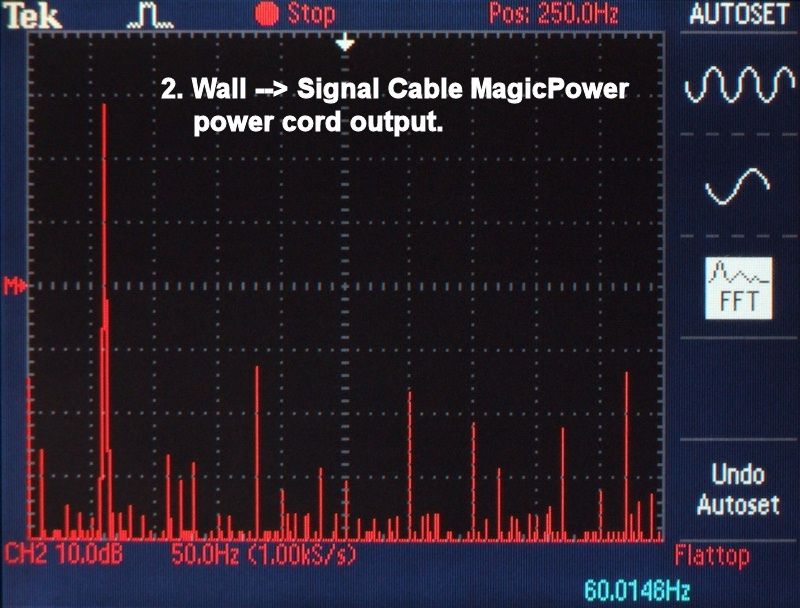
Figure 25. FFT of power signal from a Signal Cable MagicPower power cord connected to the wall.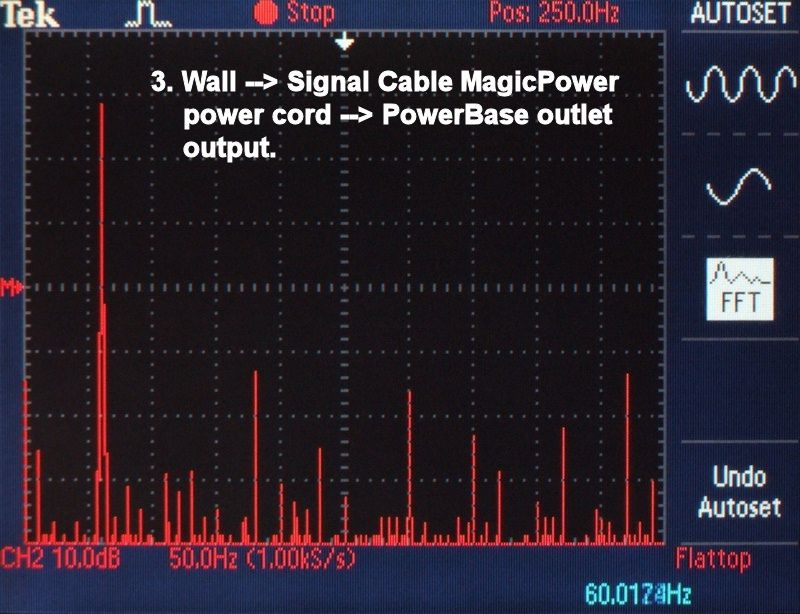
Figure 26. FFT of power signal from PowerBase fed from the wall through a Signal Cable MagicPower power cord.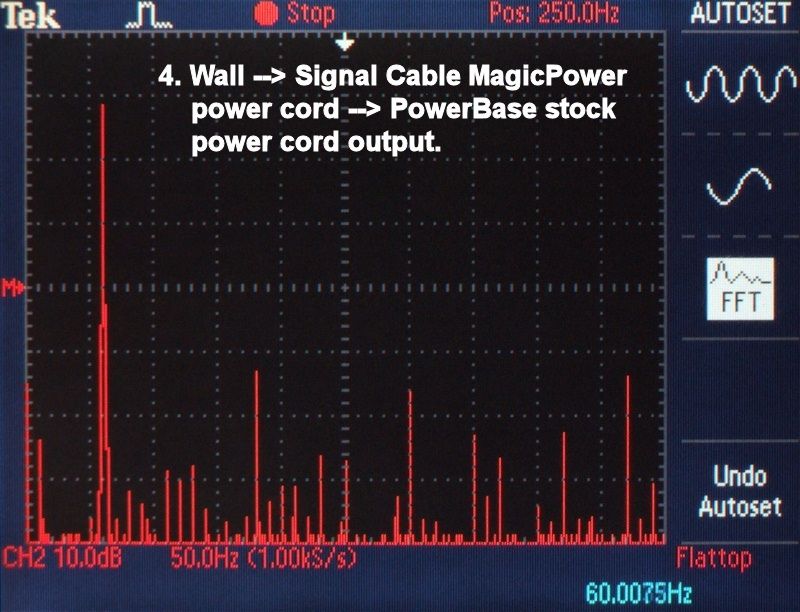
Figure 27. FFT of power signal from PowerBase stock power cord connected to a PowerBase outlet with PowerBase fed from the wall through a MagicPower power cord.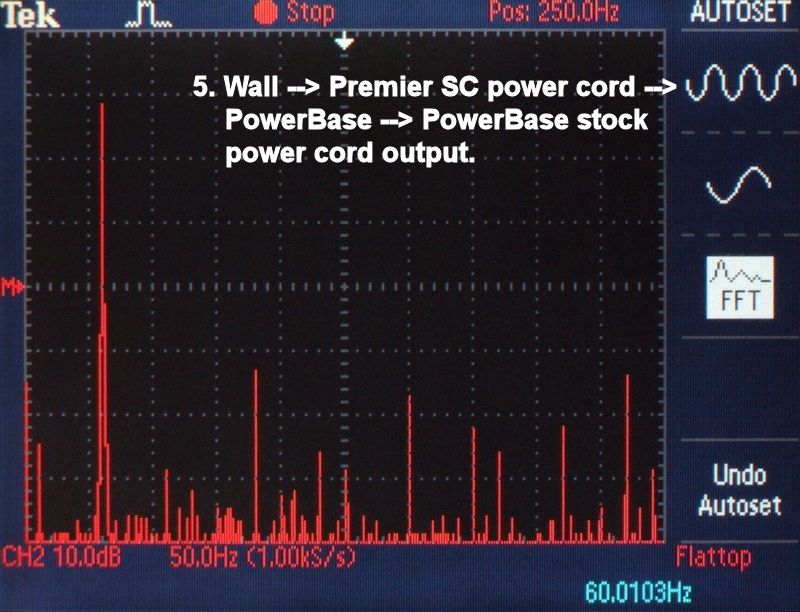
Figure 28. FFT of power signal from PowerBase stock power cord connected to a PowerBase outlet with PowerBase fed from the wall through a Premier SC power cord.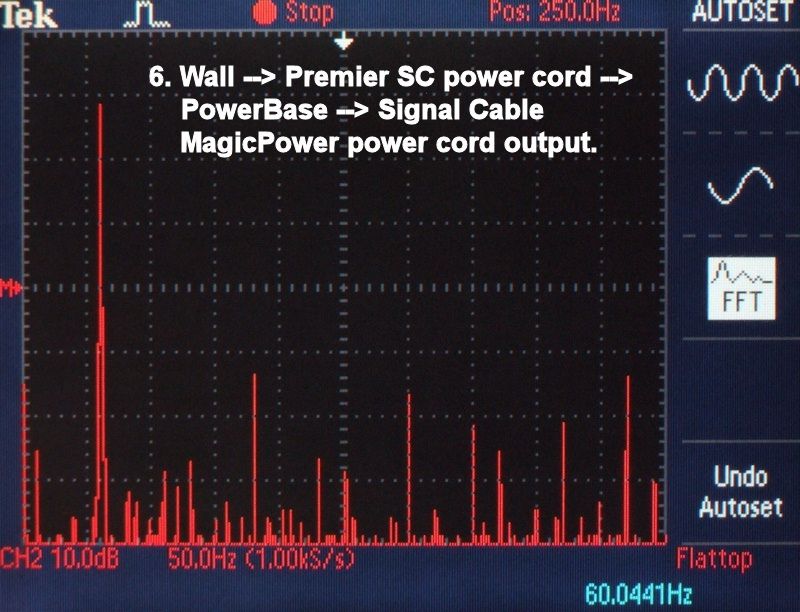
Figure 29. FFT of power signal from Signal Cable MagicPower power cord connected to a PowerBase outlet with PowerBase fed from the wall through a Premier SC power cord.Proud and loyal citizen of the Digital Domain and Solid State Country! -
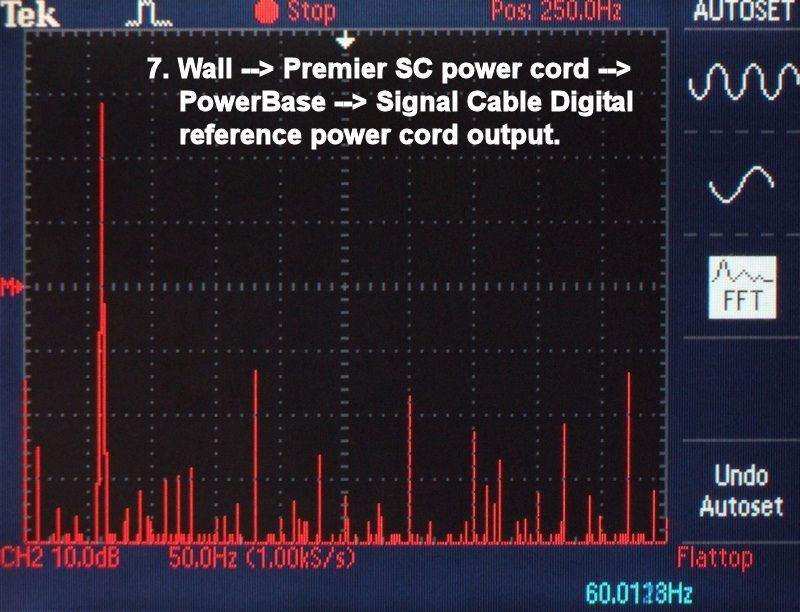
Figure 30. FFT of power signal from a Signal Cable Digital Reference power cord connected to a PowerBase
outlet with PowerBase fed from the wall through a Premier SC power cord.
Figure 31. FFT of power signal from a Statement SC power cord connected to a PowerBase outlet with
PowerBase fed from the wall through a Premier SC power cord.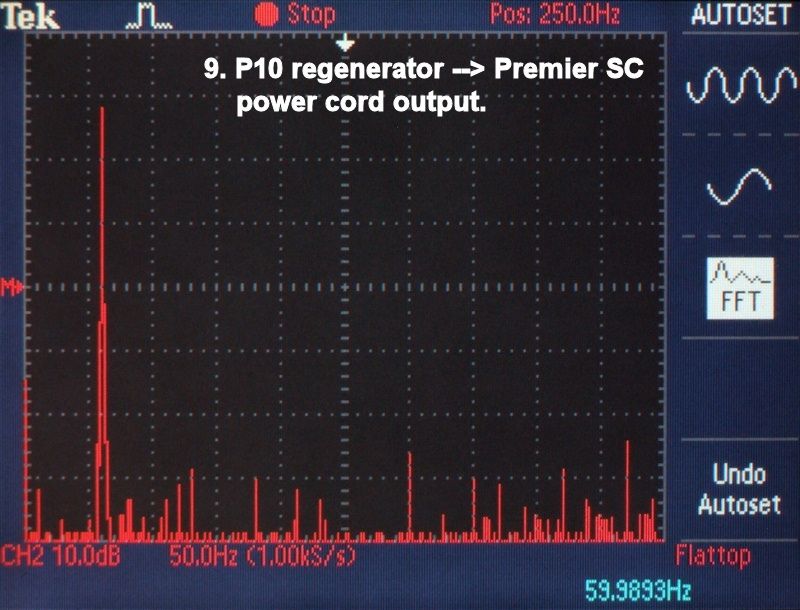
Figure 32. FFT of power signal from a Premier SC power cord connected to a PS Audio P10 AC regenerator.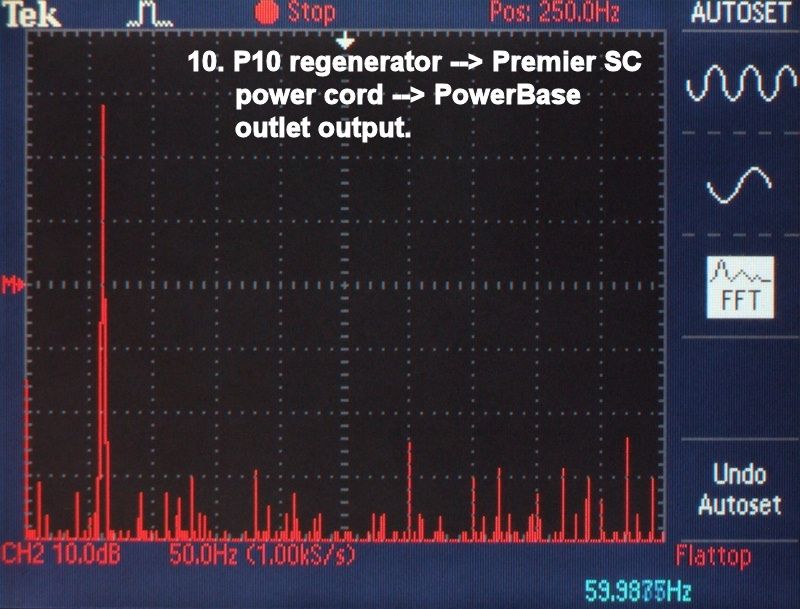
Figure 33. FFT of power signal from a PowerBase outlet with PowerBase connected to a PS Audio P10 AC
regenerator with a Premier SC power cord.
The repeatability of these type of measurements depends on how stable the power at your location is. Before the local power company upgraded its transmission facilities several years ago, there would be significant variation in power quality between day and night and between weekday and weekend, but the power quality was fairly consistent from one hour on a particular work day to the corresponding hours on subsequent work days. The same was true for weekend days. My power line voltage is fairly steady in the range of 120-122 volts with a THD in the range of 1.5%. Before power company facility upgrades, daytime THD was in the area of 2.4% and late nighttime THD was in the area of 1.6 - 2.1%. Voltage would be in the area of 118-121 volts in the daytime and 122-125 volts at night.
The measurements shown in figures 24-33 were taken within minutes of each other.
Residential Power Quality
These screen shots from my four AC regenerators were taken on 2/28/13 beginning at 7am. The two channel audio system has all the source components and preamps on a P10. The home theater system has the plasma TV and Tivo on a P5. Also in the home theater system are three power amps, two preamps and a Blu-ray player on a P10. The entire master bedroom A/V system (plasma TV, preamp, power amp, Blu-ray player and subwoofer) are on a Power Plant Premier.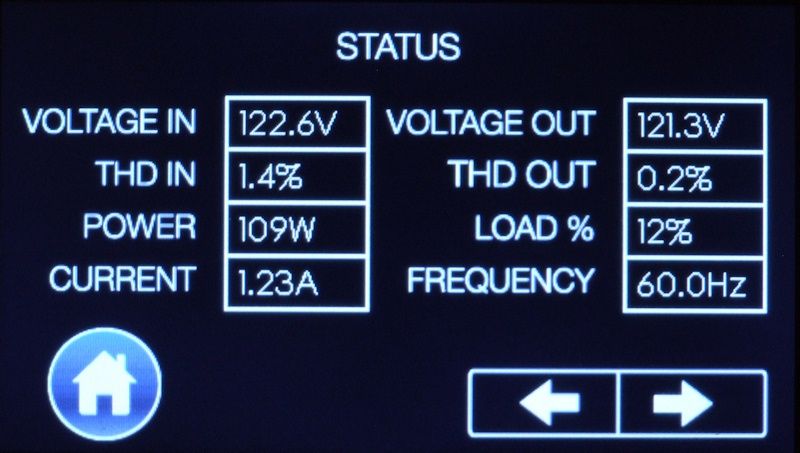
Figure 34. Two channel stereo system P10 status.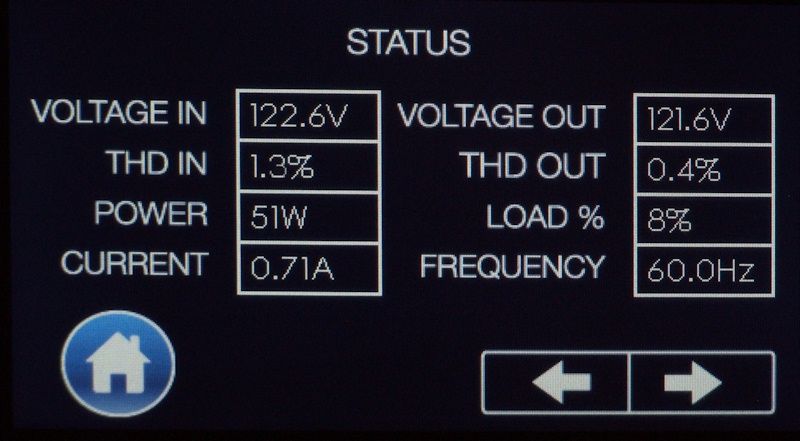
Figure 35. Home theater P5 status.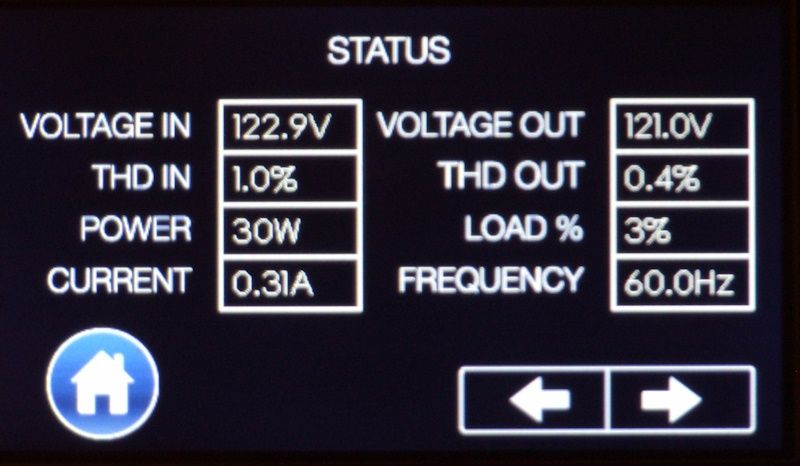
Figure 36. Home theater P10 status.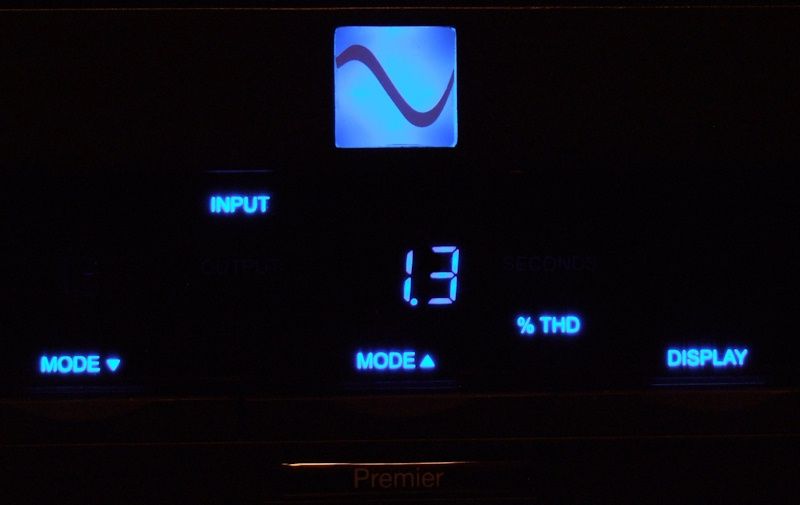
Figure 37. Master bedroom PPP incoming THD.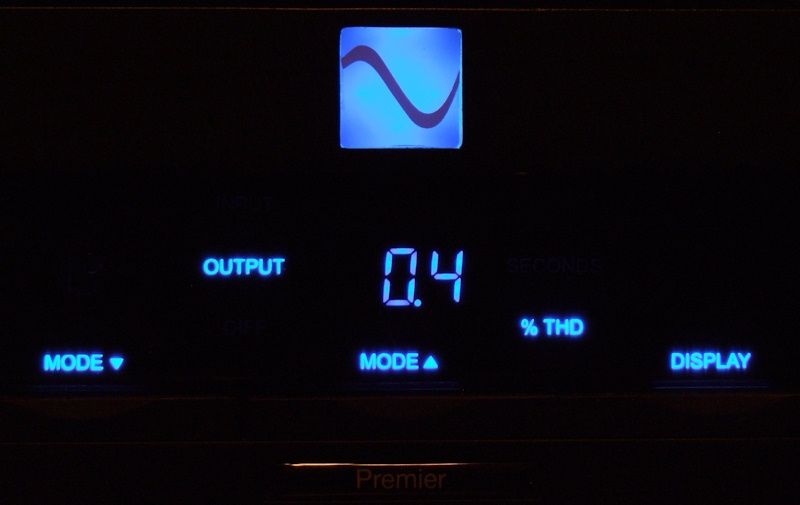
Figure 38. Master bedroom PPP outgoing THD.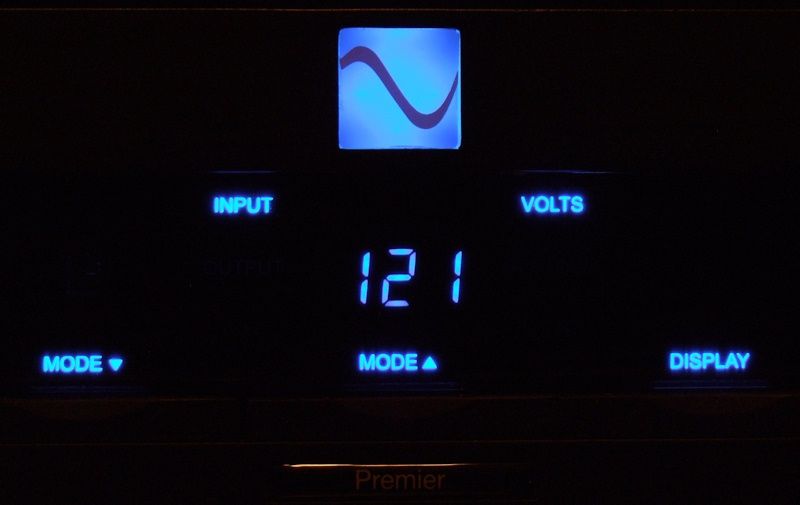
Figure 39. Master bedroom PPP incoming voltage.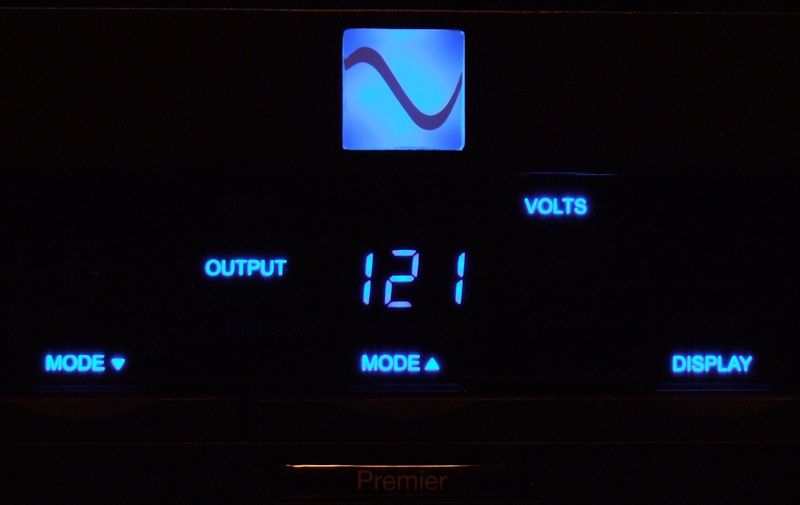
Figure 40. Master bedroom PPP outgoing voltage.
The greater the difference between the incoming and outgoing voltage, the harder the regenerator has to work. My home's line voltage is typically around 122 volts. My P5's, P10's and PPP's output is about 1 volt higher than what their meters show, therefore, I set all of my regenerator outputs at 121 in order to get 122 volts out. For example:
1. My PPP is set for 121 volts out, but a voltmeter at one of its outlets read 121.8 volts. The voltmeter at the wall outlet read 122.5 volts. The PPP's incoming and outgoing voltage meter showed 121 volts for each.
2. The P10 in my home theater system is set for 121 volts out, but a voltmeter at one of its outlets read 121.9 volts. The voltmeter at the wall outlet read 122.6 volts. The P10's status screen showed 122.6 volts incoming and 120.9 volts outgoing.
There is a procedure for calibrating the PPP's voltmeter to accurately show the actual incoming and outgoing voltage, but the meter goes out of adjustment over time. It is easier for me to just set the outgoing voltage close to the line voltage and leave it alone. The PPP's meter calibration procedure was not given in the manual, but PS Audio would provide it upon request. I don't know if the P3/P5/P10 meters can be calibrated by the user.
The hand held volt meter that I use most often around the house and that I used to take the voltage readings above, is an Ideal model 61-361 ($50) with an accuracy of +/- 0.5%. I also have a laboratory grade Agilent 34401A 6.5 digit multimeter ($1100) which has an accuracy of +/- 0.06%. In the photo below, the probes of both multimeters were simultaneously connected to the upper outlet of the receptacle that the home theater's P10 AC regenerator is connected to.
Voltage out from wall receptacle (Soloist Premier SE):
Agilent 34401A: 121.08 volts.
Ideal 61-361: 121.4 volts.
P10: 121.1 volts.
Voltage out from P10 receptacle:
Agilent 34401A: 121.48 volts.
Ideal 61-361: 121.9 volts.
P10: 120.9 volts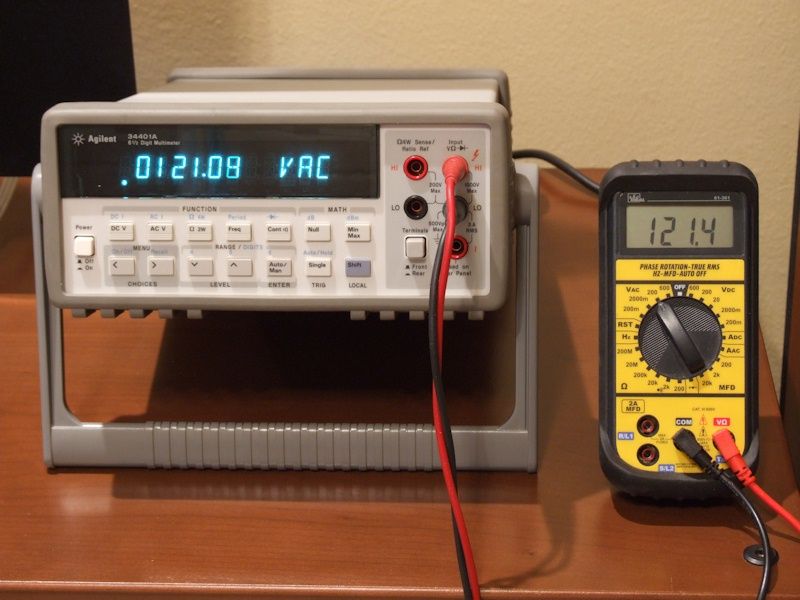
Figure 41. Voltage measurements at receptacle that the home theater P10 AC regenerator is connected to.
Agilent 34401A multimeter at left, Ideal 61-361 multimeter at right.
Turntable Critical Listening Sessions After Break In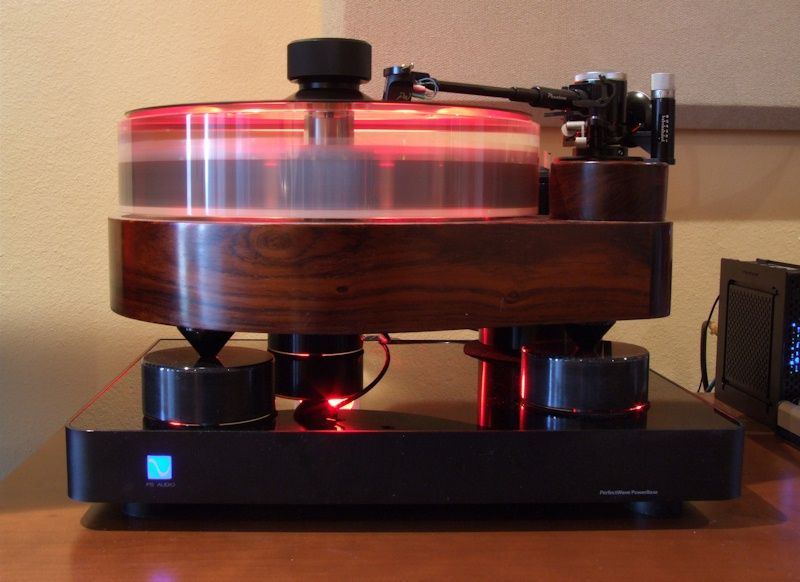
Figure 42. The PowerBase improved every performance aspect of my Teres Audio turntable.
After the PowerBase's circuitry had a day to settle down from being pounded by the Audiodharma Cable Cooker for 4.75 days straight, I did two 90 minute critical listening sessions on two successive days. When the PowerBase was first installed, prior to break in, detailed listening notes were made with regard to the placement and quality of images within the sound stage. This included aerial and lateral maps of image placement.
While listening, I do not try to mentally compare what I am hearing to what I heard in the past, although differences are sometimes immediately obvious. I concentrate on trying to characterize the quality and placement of what I hear. I often do not become aware of sonic performance differences until I compare before and after listening notes and sound stage maps.
The weight of the turntable setup is close to 100 pounds:
1. Turntable base and platter (both filled with lead shot): 60 pounds.
2. Tonearm: 2.42 pounds.
3. Motor: 6.5 pounds.
4. Black Diamond Racing isolation pucks: 2.4 pounds (0.8 pounds each).
5. PowerBase: 26.8 pounds.
6. Record clamp: 0.5 pounds.
Total: 98.62 pounds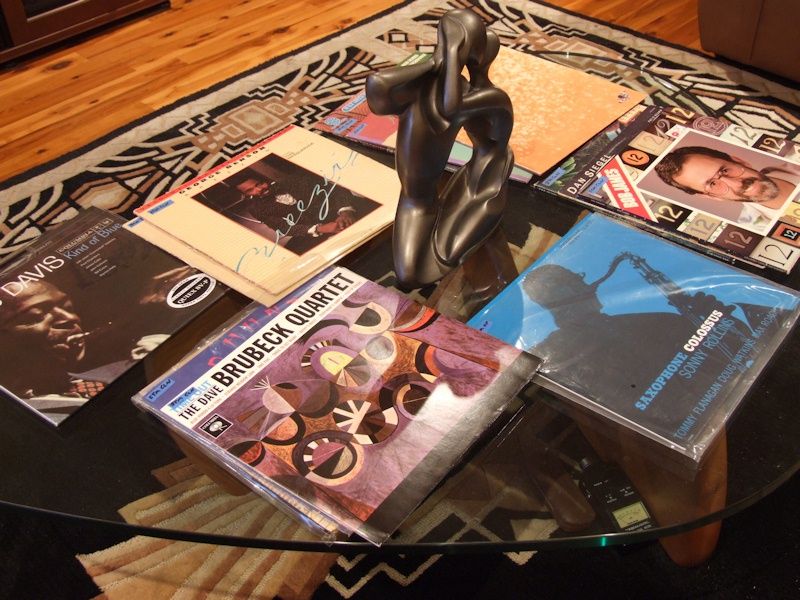
Figure 43. Delicious analog sound!
Following are "standout" listening impressions from specific albums. All records had been steam cleaned and then wet cleaned with a VPI 16.5 vacuum record cleaning machine. Records were placed in Mobile Fidelity anti-static record sleeves after cleaning.
"The Lady In My Life", Stanley Jordan, "Magic Touch" LP. Jordan's guitar had more weight and fluidity. Individual guitar notes were more distinctive, with more sustain and decay, but there was no sense of notes "crashing" into each other, but rather notes blending in while maintaining their own identity...like individual singers in a band.
"Angela", Bob James, "Touchdown" LP. James uses three different keyboard instruments. I could hear each keyboard instrument clearly and distinctively before, but the lowered noise floor provided by the PowerBase further separated each instrument and gave more weight and individual character to each instrument's notes.
"Take Five", Dave Brubeck Quartet, "Timeout" LP, 180 gram vinyl. Paul Desmond's alto sax solos were sweeter and heavier, with a more "reedy" and airy quality. The little knocks and squeaks of Dave Brubeck's piano notes were more apparent. Piano notes were more percussive. There was a more enhanced percussive sense of drum sticks striking skins.
"Morning Dance", Spyro Gyra, "Morning Dance" LP. This track has a thick, lush percussion background, along with a xylophone accompaniment to Jay Beckinstein's alto saxophone solos. The percussion instruments formed a thick, well-defined concave wall of sound behind the sax and xylophone. The xylophone notes were thicker, heavier and more percussive.
"Bwana He No Home", Michael Franks, "Sleeping Gypsy" LP. The grumbling, growling guitar at the far right was louder with heavier weight and more well defined grumbles, growls and string overtones. Michael Franks' vocals were heavier and more detailed, with more separation between them and the drum kit, saxophone and bass guitar that shared the center stage.
Overall, there was more sonic realism, more depth in the sound stage, more ambient information retrieval, more of a sense of sound reflecting from the walls of the recording space. In many cases, I noted sounds, or details of sounds, that went unnoticed before.
There may be future sonic improvements due to the PowerBase's suspension system fully breaking in.Proud and loyal citizen of the Digital Domain and Solid State Country! -
SACD Player Critical Listening Session After Break In
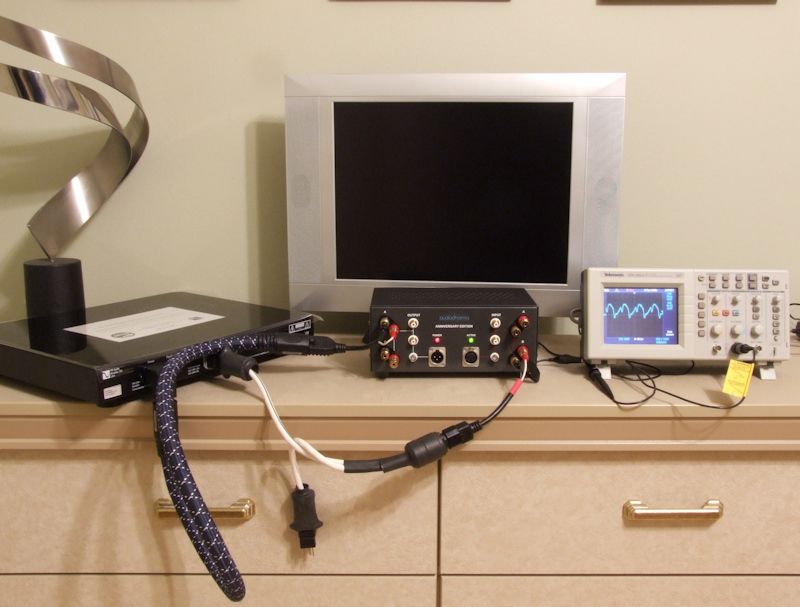
Figure 44. PowerBase #2 break in setup.
The SACD player's PowerBase was broken in on the Cable Cooker for 67 hours straight. This was approximately equivalent to 201 hours of music play. There was no evidence of overcooking.
As with the first PowerBase, the oscilloscope measured a 0.2 volt increase (from 12.4 volts to 12.6 volts) of the Cooker's conditioning signal at the second PowerBase's receptacle during the first 24 hours of conditioning. With the first PowerBase, the Cooker's signal amplitude rose from 11.8 volts to 12 volts during the first day. My Cooker's unloaded signal amplitude is 13 volts.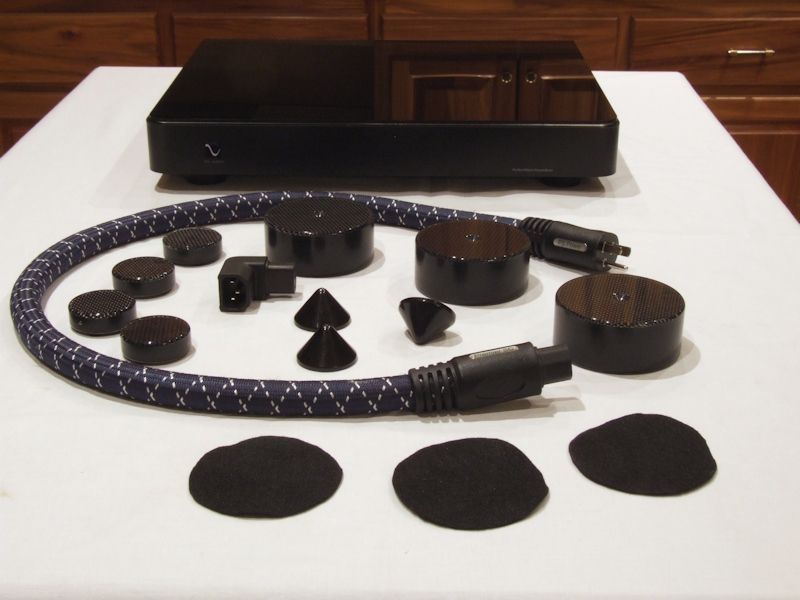
Figure 45. The second PowerBase and its fleet of accessories.
From left to right in front of the PowerBase in figure 45:
1. PS Audio Premier SC 1m power cord ($995).
2. Black Diamond Racing Mini Black Holes (4 @ $45 each = $180)
3. AudioQuest IEC right angle adapter ($25).
4. Black Diamond Racing Jumbo Pits (3 @ $125 each = $375).
5. Black Diamond Racing Mark 4 Cones (3 @ $20each = $60)
Total: $1635
The three felt pads in the foreground of figure 45 cost a few pennies and were cut from a sheet of felt.
The cumulative retail prices of the PowerBase's accessories cost more than the PowerBase. Fortunately, I know how to shop wisely so that I didn't have to pay full retail (no Gray market, just demos and B-stock). The AudioQuest adapter is used for strain relief.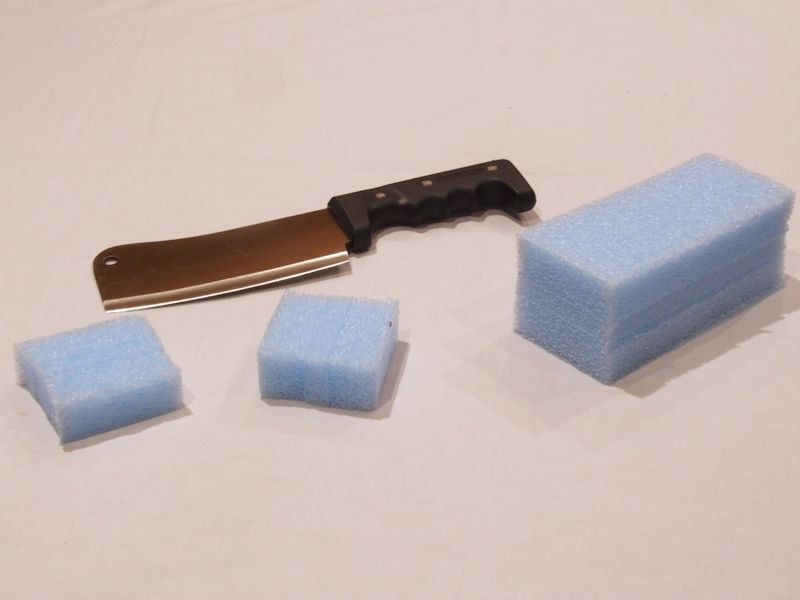
Figure 46. I don't throw packing material away. Slices of this thick, stiff foam block that was used to pack
computer equipment make great strain relief pads for my big thick Premier SC power cords.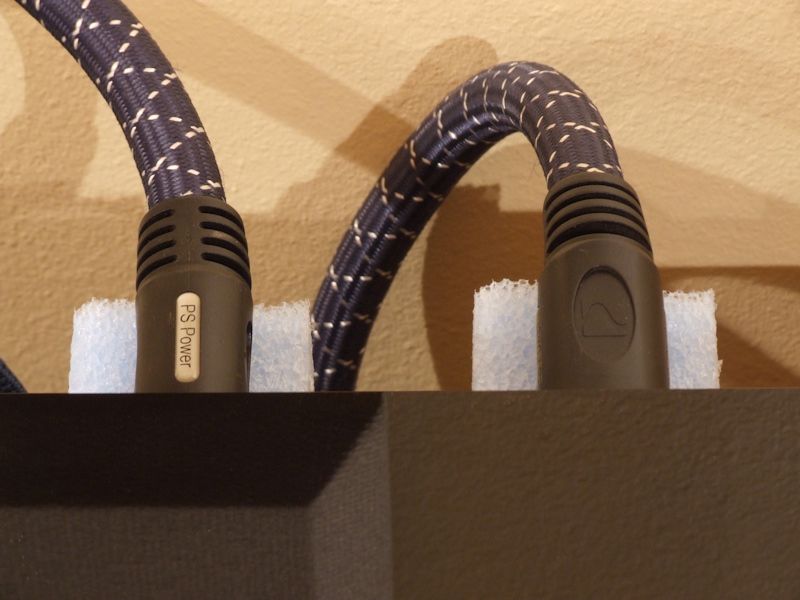
Figure 47. PowerBase #2's Premier SC power cords and foam strain relief blocks.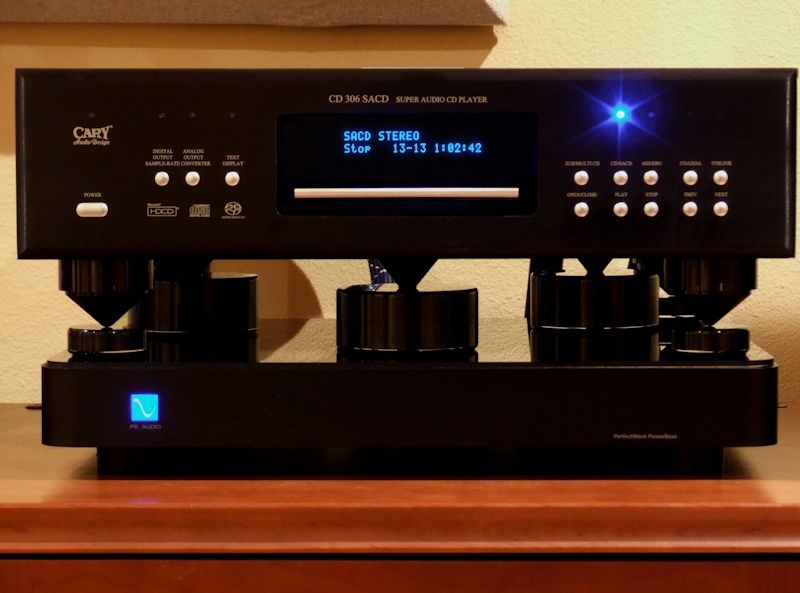
Figure 48. Completed isolation installation: PowerBase and Black Diamond Racing carbon fiber components.
The BDR Mini Black Holes under each of the SACD player's cone feet serve a functional and aesthetic function:
Aesthetic: I did not like the look of the cone SCAD player's cone feet hanging in air while the player was suspended on the Jumbo Pit/cone combinations. The Mini Black Holes provide an aesthetic platform for the cone feet. The adjustable cones are turned down until their tips are just above the Black holes.
Functional: The cone feet rest on the BDR Black Holes and support the player while the Jumbo Pit/cone combinations are positioned under the player. Once the Jumbo Pit/Mark 4 Cone combinations are in position, the player's cone feet are turned up until the player is resting only on the tops of the BDR cones.
The post-break in sonic improvements were the same type as those heard with the turntable, so I won't rehash them here. I will say that the degree of improvement was greater with the turntable than with the SACD player.
Similar to my speculation about the turntable's PowerBase, there may be further sonic improvements due to the suspension system fully breaking in.
Vibration Damping Measurements
Four years ago, when I was experimenting with isolation tweaks, I taped an electric hair clipper near my turntable to see the damping effect that different isolation tweaks would have on vibrations reaching the cartridge stylus. Details are here.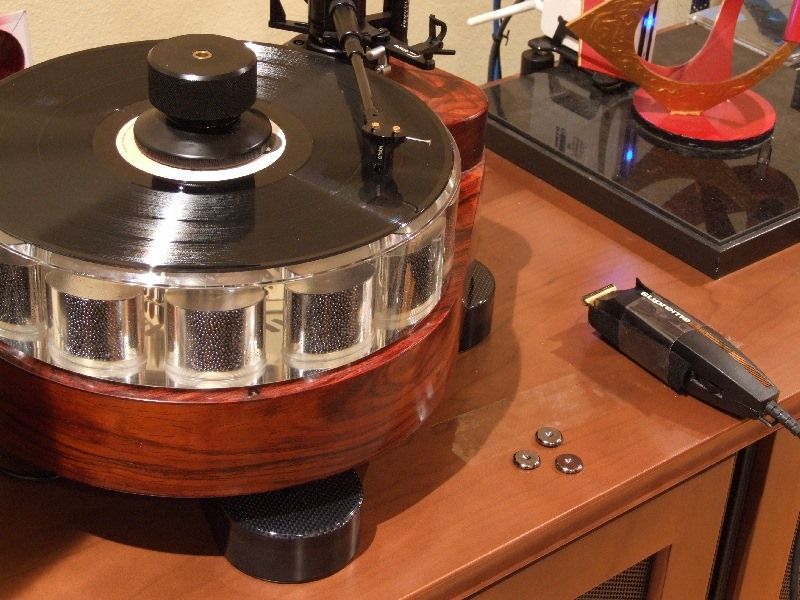
Figure 49. January 2009 hair clipper test with turntable on Black Diamond Racing Mark 4 cones and Black
Diamond Racing Jumbo Pits.
In the 2009 test, a Radio Shack analog sound level meter ( cat. no. 33-2050) was placed on a tripod t a height of 51" and 3" from the front of the left speaker. An electric hair clipper was taped to the top of the equipment cabinet near the turntable as shown in figure 46. The clipper was wrapped in a small sheet of felt to dampen airborne noise reaching the meter. Sound level measurements, in C-weighted decibels with the meter set to slow response, were taken with the cartridge stylus raised and again in a record groove. The same hair clipper, same sound level meter, same tripod, same phono cartridge, same tonearm, same turntable, and same record were used in the 2009 and 2013 tests.
I thought it would be interesting to run the clipper test again with the PowerBase. The results are given in tables 1 and 2. The recent test is not an exact comparison to the 2009 test because there have been some equipment changes which added 92 pounds of weight to the cabinet (table 3).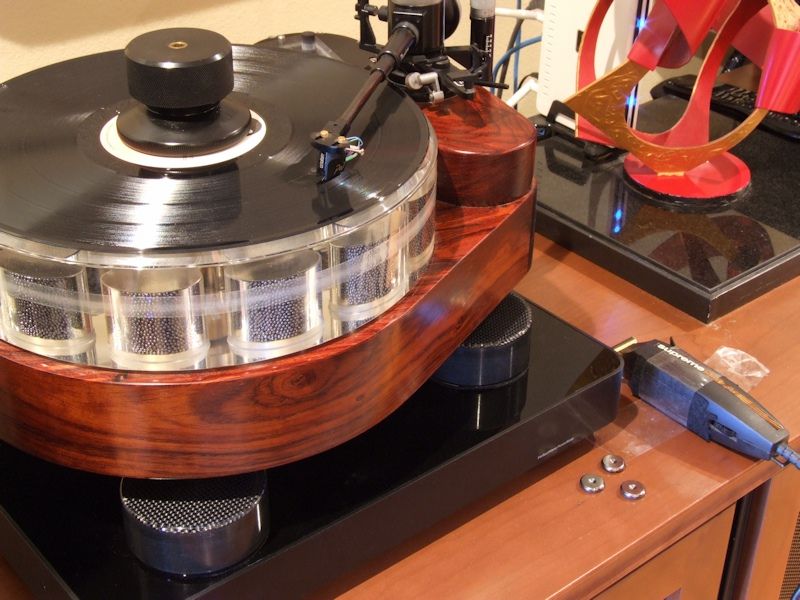
Figure 50. January 2009 hair clipper test with turntable on Black Diamond Racing Mark 4 cones, Black
Diamond Racing Jumbo Pits, and PS Audio PowerBase.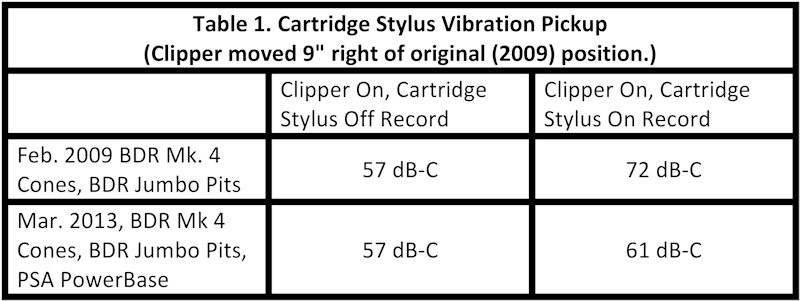
In order to match the 57 dB-C stylus-up noise figure of the 2009 test, I had to move the clipper 9" to the right of the 2009 position (table 1). When the stylus was lowered into a record groove, the noise rose 4 dB to 61 dB-C.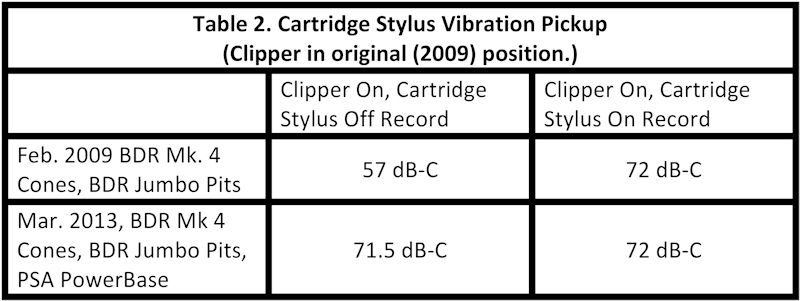
With the clipper in the original 2009 position (table 2), the stylus-up noise figure was much higher than in the 2009 test, but the noise increase when the stylus was lowered into a record groove was significantly lower: a 0.5 db-C increase compared to the 2009 test's 15 dB-C increase.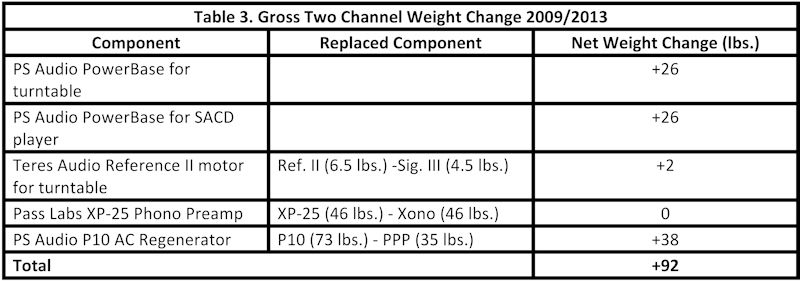
In the future, when I am more dedicated to audio than I am now, I will look into getting one of those audiophile quality cement stands for my turntable and SACD player.Proud and loyal citizen of the Digital Domain and Solid State Country! -
I found the PowerBase to be an excellent compliment to the isolation and power filtering measures I already had in place. The PowerBase provided further refinements rather than night and day differences in my two channel audio system. Although the PowerBase is advertised as a means to simplify and declutter, it did not replace my previous isolation gear, nor did it negate the need for a high quality power cord going to the audio component.
This quote from the PS Audio forum echoes my experience with the PowerBase and existing isolation gear:
"lonson March 10, 2013
I'm a new PowerBase owner. I have my PWD Mk II and PWT stacked on the PowerBase, and though I tried it three ways (both with original feet stacked on top of each other, PWD with original feet, PWT stacked on top no feet, both PWD and PWT on Herbie's Audio Lab "Iso-Cup" footers) there was a clear winner: both on Herbie's Audio Lab Iso-Cups on the PowerBase.
For isolation I previously had the two components on Iso-Cups on a 4" maple platform, sitting on top of Herbie's Audio Lab "Grungebuster" 2" wide pads, on my Mapleshade Samson V.2 rack. I took out the platform and the Grungebuster pads and put the PowerBase right on top of the shelf in the Samson V.2 rack. I must say that the platforms and pads were doing an excellent job, there's a bit of improvement with the PowerBase (initially used "unplugged" for evaluation) in sound-stage width, but I was not too surprised to find that I had vibration control pretty in hand before the PowerBase. I've about 60 hours now of the two components plugged into the PowerBase. I have an AC-12 going from the Power Plant Premier to the PowerBase and each component is connected to the PowerBase with an AC-12. I don't hear AMAZING improvement yet. Some, mainly a bit more "black background." I'm hoping that as the electrical components break in I'll hear more "wow" improvement. Probably will. If I do, I'll order another to try under the Power Plant Premier."
[Link: http://www.psaudio.com/forum/#/discussion/4919/power-base-what-are-your-impressions/p4]Proud and loyal citizen of the Digital Domain and Solid State Country! -
Man, I simply love it when DK does a review. He goes into more depth than a professional reviewer. Very nice DK, your rig just gets better and better.HT SYSTEM-
Sony 850c 4k
Pioneer elite vhx 21
Sony 4k BRP
SVS SB-2000
Polk Sig. 20's
Polk FX500 surrounds
Cables-
Acoustic zen Satori speaker cables
Acoustic zen Matrix 2 IC's
Wireworld eclipse 7 ic's
Audio metallurgy ga-o digital cable
Kitchen
Sonos zp90
Grant Fidelity tube dac
B&k 1420
lsi 9's -
Man, I simply love it when DK does a review. He goes into more depth than a professional reviewer.
You can do that when you aren't selling ad space. :biggrin: Proud and loyal citizen of the Digital Domain and Solid State Country!
:biggrin: Proud and loyal citizen of the Digital Domain and Solid State Country! -
Nice review - love that turntable...
-
It makes me feel good knowing that you feel the big Polks are still good enough to be in your system considering the super high quality of all of your other equipment. Excellent review, very in depth.POLK SDA 2.3 TLS BOUGHT NEW IN 1990, Gimpod/Sonic Caps/Mills RDO-198
POLK CSI-A6 POLK MONITOR 70'S ONKYO TX NR-808 SONY CDP-333ES
PIONEER PL-510A SONY BDP S5100
POLK SDA 1C BOUGHT USED 2011,Gimpod/Sonic Caps/Mills RDO-194
ONKYO HT RC-360 SONY BDP S590 TECHNICS SL BD-1 -
Wow! I'm gonna have to spend more time than I have right now re-reading this. Thorough write up and analysis DK. Thanks!"Science is suppose to explain observations not dismiss them as impossible" - Norm on AA; 2.3TL's w/sonicaps/mills/jantzen inductors, Gimpod's boards, Lg Solen SDA inductors, RD-0198's, MW's dynamatted, Armaflex speaker gaskets, H-nuts, brass spikes, Cardas CCGR BP's, upgraded IC Cable, Black Hole Damping Sheet strips, interior of cabinets sealed with Loctite Power Grab, AI-1 interface with 1000VA A-L transformer
-
Excellent review DK - very fun to read and trying to understand your method of attack. Thank you for your effort.[
-
It makes me feel good knowing that you feel the big Polks are still good enough to be in your system considering the super high quality of all of your other equipment. Excellent review, very in depth.
Yeah.DarqueKnight wrote: »
The inscrutable monoliths have seen a lot of gear come
and go over the years. They, on the other hand, just
stand firm and get better with age.Proud and loyal citizen of the Digital Domain and Solid State Country! -
Thanks. Great review.

